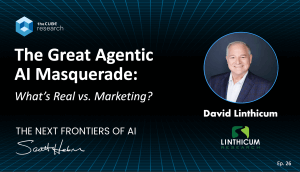The News
Starburst has announced an expansion of its AI capabilities, emphasizing the critical role of data architecture as the foundation for AI success. The company is introducing a suite of AI accelerators, optimizing data processing for AI workloads through enhanced governance, workload optimizations, and support for Retrieval-Augmented Generation (RAG) architectures.
To read more, visit the original press release here.
Analysis
The intersection of AI and data architecture is one of the most critical challenges for enterprises today. Industry data highlights that 70% of AI initiatives fail due to poor data quality and governance, emphasizing the need for structured, accessible, and well-managed data environments. Other analysts predict that by 2026, 90% of data architectures will integrate AI-driven automation, reducing time-to-insight and improving operational efficiency. Additional research shows that companies implementing AI-ready data infrastructures experience a 50% reduction in model deployment time, proving the value of automated data preparation. McKinsey’s insights indicate that organizations leveraging AI-powered analytics see a 20-30% increase in revenue growth, further demonstrating the need for a strong data foundation. IBM research reinforces this, stating that enterprise AI adoption will be driven by hybrid data environments, requiring scalable, governed data architectures. With Starburst’s latest innovations, the company is addressing these industry shifts, helping developers and businesses seamlessly integrate AI into their data ecosystems.
The Growing Intersection of AI and Data Architecture
- The rise of AI-driven applications has placed a greater emphasis on data architecture as a foundational element for AI success.
- Organizations are shifting from traditional analytics workflows to AI-powered insights, increasing the demand for scalable, secure, and well-governed data environments.
- According to Paul Nashawaty and theCUBE Research, AI adoption is accelerating due to the need for real-time insights and automated decision-making, making robust data infrastructure a critical enabler.
- The shift toward hybrid data lakehouses and multi-cloud environments is transforming how businesses manage AI workloads.
How Starburst’s Announcement Impacts AI & Application Development
- Starburst’s AI accelerators are designed to streamline AI data pipelines, reducing friction in data ingestion, query optimization, and governance.
- The introduction of Icehouse architecture (Trino + Apache Iceberg) ensures structured, scalable, and accessible data lakes for AI models.
- Developers now have a unified, SQL-based analytics and AI engine, simplifying the process of building AI-ready data stacks.
- This shift supports faster model training, improved inference speeds, and better data security, key concerns for enterprise AI adoption.
How Developers Have Previously Addressed These Challenges
- Historically, AI development has been hindered by fragmented data sources, siloed architectures, and governance challenges.
- Developers relied on custom ETL pipelines, data warehouses, and disconnected AI training environments, leading to inefficiencies.
- Data governance often required manual compliance measures, increasing operational overhead.
- AI projects frequently stalled due to data inconsistencies, lack of interoperability, and high infrastructure costs.
How This News Changes Developer Strategies Moving Forward
- With Starburst’s AI data stack, developers can now integrate AI workloads directly into scalable data architectures without requiring custom-built data pipelines.
- The hybrid lakehouse model enables seamless access to structured and unstructured data, improving AI model accuracy and reliability.
- Enhanced AI governance features will help ensure compliance with evolving regulatory standards while maintaining data security.
- Developers can now focus on optimizing AI models and applications rather than managing complex data infrastructure challenges.
Looking Ahead
Market Shifts in AI & Data Infrastructure
- The AI market is expected to double by 2027, with 85% of enterprises investing in AI-driven analytics and automation, according to IDC.
- Data platforms will continue to evolve from static storage solutions to dynamic AI-ready environments, requiring real-time data access and governance.
- The convergence of AI and analytics will drive the need for unified data architectures, eliminating silos and enhancing AI-driven business intelligence.
How Starburst’s Expansion Influences These Trends
- By aligning analytics and AI workloads, Starburst is positioning itself as a core infrastructure provider for enterprises adopting AI-powered decision-making.
- The focus on RAG architectures and AI accelerators signals a shift toward more intelligent, context-aware AI applications.
- As businesses prioritize AI readiness, Starburst’s approach to data governance, hybrid cloud integration, and workload optimization will set new standards for scalable AI architectures.



